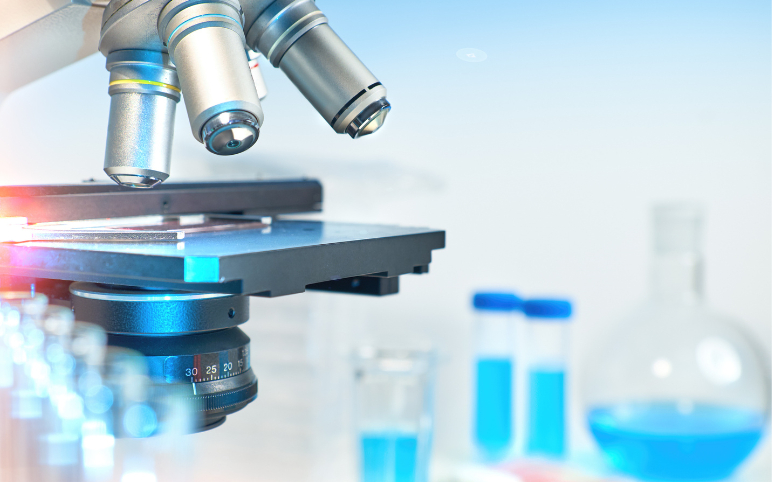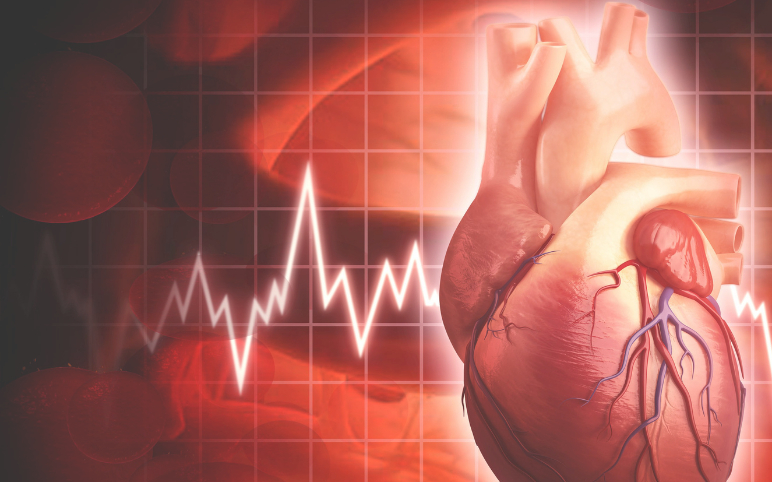From Lab to Lifesaver: Advancing Artificial Blood Vessels for Healthier Tomorrows
May 29, 2024
Table of Contents
Artificial blood vessels are at the forefront of medical innovation, offering a lifeline to millions worldwide. With advancements in bioengineering, these synthetic conduits are shaping a new era in healthcare, promising solutions to cardiovascular diseases and beyond.
Artificial blood vessels represent a revolutionary advancement in the realm of medical science, offering promising solutions to numerous cardiovascular challenges. These synthetic conduits mimic the structure and function of natural blood vessels, providing avenues for bypass surgeries, organ transplants, and treatment of vascular diseases. As the demand for viable alternatives to traditional grafts grows, artificial blood vessels emerge as a beacon of hope, offering patients enhanced longevity, reduced risks of rejection, and improved overall quality of life.
Downloads
Click Here To Get the Article in PDF
Recent Articles
- Miracor Medical’s Picso Pivotal Study; Medtronic’s Extravascular ICD; Galaxy Medical’s CENTAURI P...
- GSK’s RSV Vaccine Clears Phase III Test in Adults; Roche’s Tecentriq for Adjuvant NSCLC; Owkin Ba...
- Understanding the Growth and the Evolving Market Dynamics of Cardiac Rhythm Management Devices
- Booming Healthcare sector in MENA: Lucrative opportunity for Global pharma players
- Top healthcare innovations changing the healthcare dynamics
Understanding the Demand for Artificial Blood Vessels
With an aging population and an increasing prevalence of cardiovascular diseases, the need for effective vascular solutions has never been more pressing. Artificial blood vessels hold immense promise in addressing this demand, offering a viable alternative to traditional grafts while mitigating issues such as rejection and scarcity of donor tissue. Moreover, these synthetic conduits have the potential to revolutionize regenerative medicine, facilitating the creation of personalized vascular constructs tailored to individual patients’ needs, thus ushering in a new era of precision healthcare.
At the heart of comprehending the demand for artificial blood vessels lies the recognition of their transformative impact across diverse medical domains. From enabling complex cardiovascular surgeries to advancing tissue engineering and drug delivery systems, the applications are manifold. Moreover, the global shortage of organ donors necessitates innovative solutions, making artificial blood vessels not just a choice but a necessity in many cases. As research continues to unravel the complexities of vascular biology and biomaterial science, the demand for these bioengineered conduits is poised to escalate, driving further advancements and reshaping the landscape of modern medicine.
Mimicking Nature: Biomimicry in Artificial Blood Vessels
Biomimicry, the art of drawing inspiration from nature to solve human challenges, has found a compelling application in the development of artificial blood vessels. These vital conduits, mimicking the intricate network found in the human body, offer promising solutions to cardiovascular diseases and organ transplantation. By emulating nature’s design, researchers have sought to create vessels that are not only biocompatible but also capable of dynamic responses, such as dilation and constriction, mirroring the behavior of natural arteries and veins.
One approach in biomimicry involves leveraging the structural composition of natural blood vessels. Materials science researchers have explored using biocompatible polymers with similar mechanical properties to elastin and collagen, the primary constituents of vascular tissues. Through advanced fabrication techniques like 3D printing and electrospinning, these synthetic vessels can replicate the complex architecture and mechanical resilience of their biological counterparts, ensuring optimal performance within the human body.
Furthermore, biomimetic artificial blood vessels are not only passive conduits but also active participants in maintaining homeostasis. Inspired by the endothelial cells lining natural blood vessels, scientists have integrated responsive materials and microfluidic systems into these constructs. This innovation enables artificial vessels to sense changes in blood flow and pressure, regulating their diameter and blood flow accordingly. Such biomimetic behavior holds immense promise in enhancing the longevity and functionality of artificial blood vessels, marking a significant stride towards safer and more effective medical interventions.
Artificial Blood Vessels Market Dynamics
The artificial blood vessels market is experiencing dynamic growth driven by several factors, including technological advancements, rising prevalence of cardiovascular diseases, and increasing demand for minimally invasive surgical procedures. With the growing aging population globally, there is a higher incidence of vascular disorders, such as atherosclerosis and aneurysms, fueling the need for innovative solutions like artificial blood vessels. This surge in demand is propelling artificial blood vessels market expansion, with projections estimating a steady CAGR of ~5% to reach USD 3.07 billion by 2030, as per DelveInsight.
This growth can also be attributed to factors such as increasing investments in research and development activities, expanding applications of artificial blood vessels in vascular surgeries, and rising healthcare expenditure worldwide. Additionally, advancements in biomaterials, tissue engineering, and 3D printing technologies are further driving market growth by enhancing the efficacy and durability of artificial blood vessels.
Moreover, the market dynamics are influenced by regulatory initiatives aimed at streamlining the approval process for artificial blood vessels, ensuring their safety and efficacy. Government initiatives aimed at improving healthcare infrastructure and accessibility in emerging economies are also contributing to market expansion. However, challenges such as high costs associated with artificial blood vessel procedures and concerns regarding long-term biocompatibility and durability hinder the market growth to some extent.
Furthermore, strategic collaborations, partnerships, and mergers among key players are prevalent in the market landscape, fostering innovation and product development. Key players are focusing on launching advanced artificial blood vessel products with enhanced biocompatibility and longevity to gain a competitive edge in the market. Overall, with the convergence of technological innovations, increasing disease prevalence, and supportive regulatory frameworks, the artificial blood vessels market is poised for significant growth in the coming years.
Major Companies Working in the Artificial Blood Vessels Market
In the rapidly evolving landscape of medical technology, several major companies are at the forefront of developing artificial blood vessels, aiming to revolutionize vascular surgery and enhance patient outcomes. One prominent player in this market is Humacyte, renowned for its innovative approach utilizing bioengineered blood vessels derived from human tissue. With a focus on regenerative medicine, Humacyte’s vascular grafts offer promising solutions for patients in need of vascular access or bypass procedures, potentially reducing complications associated with traditional grafts.
Another key contributor to the artificial blood vessels market is W.L. Gore & Associates, a renowned leader in medical device innovation. Leveraging its expertise in advanced materials and biomedical engineering, Gore has developed durable and biocompatible synthetic vascular grafts that mimic the natural properties of human blood vessels. These implants demonstrate exceptional patency and resistance to thrombosis, making them ideal for various cardiovascular surgeries and vascular reconstructions.
Medtronic, a global healthcare technology company, also plays a significant role in advancing artificial blood vessel technology. Through its research and development efforts, Medtronic is pioneering next-generation vascular solutions, including bioresorbable scaffolds and tissue-engineered grafts. By integrating cutting-edge materials and advanced manufacturing techniques, Medtronic aims to address the growing demand for long-lasting and biocompatible vascular implants, ultimately improving patient outcomes and quality of life.
The other companies working in the artificial blood vessels market include LeMaitre Vascular Inc., Terumo Medical Corporation, B. Braun SE, Roumai Med, Jiangsu Bioda Life Science Co. Ltd., Artivion, Inc., Getinge, Vygon, and others. As these major companies continue to innovate and collaborate with healthcare providers, the artificial blood vessels market is poised for further expansion, offering new possibilities in the field of vascular surgery and patient care.

Artificial Blood Vessels: Future Direction and Challenges
Artificial blood vessels represent a critical frontier in medical research, offering significant promise for treating cardiovascular diseases and enhancing surgical outcomes. Future directions in this field are focused on developing materials that can closely mimic the natural properties of human blood vessels. Researchers are exploring advanced biomaterials, such as biodegradable polymers and bioengineered tissues, which can promote endothelial cell growth and integration with existing vascular systems. The integration of nanotechnology is also being investigated to create more durable and responsive artificial vessels. These innovations aim to reduce the risk of complications like thrombosis and infection while improving the long-term viability of the grafts.
Despite the promising advancements, there are significant challenges to overcome in the development and implementation of artificial blood vessels. One of the primary hurdles is ensuring biocompatibility and minimizing immune rejection. Artificial vessels need to interact seamlessly with the body’s immune system, which often perceives foreign materials as threats. Additionally, achieving the right balance between strength and flexibility in the materials is crucial; they must withstand the mechanical forces exerted by blood flow without degrading over time. Ensuring that these vessels can effectively mimic the elasticity and resilience of natural blood vessels is a complex engineering challenge that requires ongoing research and innovation.
Furthermore, the regulatory and clinical trial processes for artificial blood vessels pose significant challenges. Extensive testing is necessary to ensure safety and efficacy, which can be time-consuming and costly. The translation from successful laboratory results to clinical applications requires robust, scalable manufacturing processes that maintain the integrity and quality of the vessels. Additionally, there is a need for more comprehensive long-term studies to understand the performance of artificial blood vessels in diverse patient populations. Addressing these challenges requires multidisciplinary collaboration among materials scientists, biomedical engineers, clinicians, and regulatory bodies to bring these life-saving innovations from the lab to the clinic.

Downloads
Article in PDF



